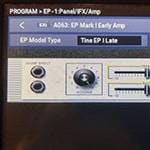Greetings! This is Mark, a new writer.
This time, I would like to talk about the NUX MG-30, a multi-effects pedal that was released in 2021 and I have been using it ever since.
Despite the popularity of this product, which is so great that it is regularly in short supply, there have been few reviews in Japan, so many people may say, “I know the name, but I don't have a detailed grasp of how it works.”
Therefore, in this article, I am going to introduce what I liked about the actual operation from the viewpoint of a heavy user of the MG-30.
Basically, I will not touch on the features and specifications that are widely advertised on the official website and sales pages.
So, before I really get into this article, I recommend that you first read these sites.
■ High performance footswitch included with the MG-30
The MG-30 comes with a footswitch called NMP-2. It costs about 3,000 to 5,000 yen when purchased separately.
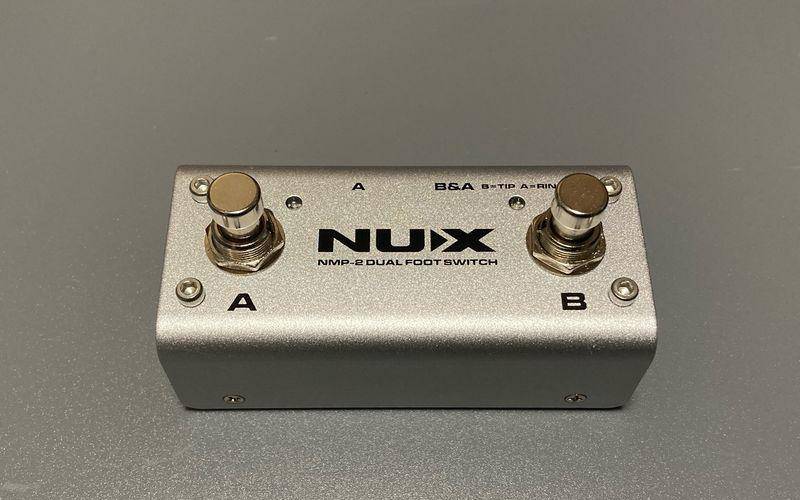
This is not as simple as a switch for an amplifier,
- Equipped with mode switching function (open, close, latch)
- External power supply type (9V center-minus; can be operated in closed mode even when passive)
- Can be operated with either single or dual switches
- LED indicators for each switch
- Rugged aluminum body on the level of compact effects pedals
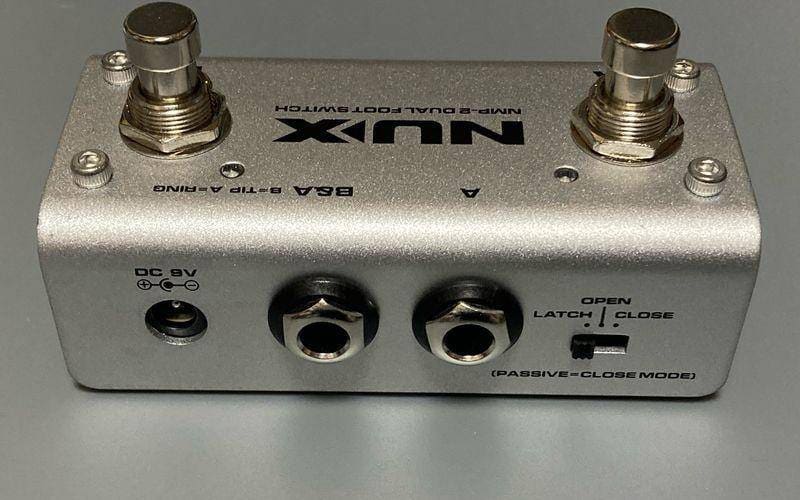
These are just a few of the features. Of course, it can be used with equipment other than the MG-30 as long as the specifications match. It is quite an extravagant accessory.
■ A wide variety of assignment patterns
The MG-30 allows you to assign (register) any function to the aforementioned external switch, the pedal on the right side of the main unit, and the CTRL switch.
Individual effect on/off, scene switching, volume control, modulation and Kukan parameters control... and so many more. There’s too much flexibility.
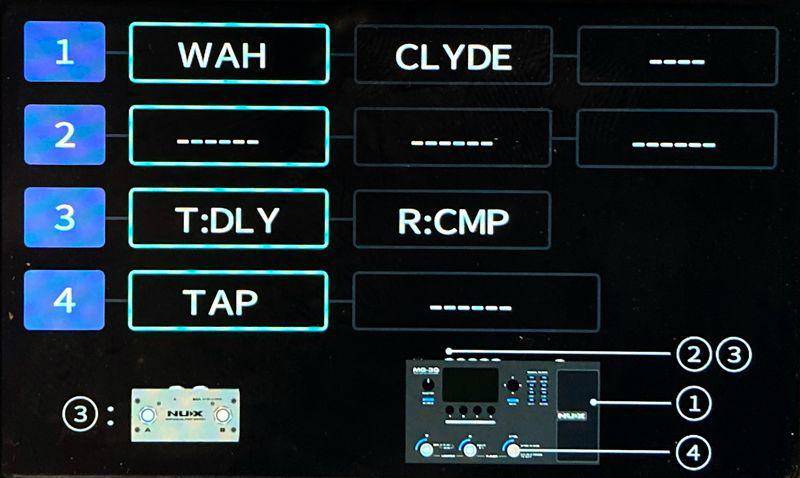
This is the assignment of the patch I actually use.
- Turn on the built-in pedal to adjust the vibrato RATE speed (volume pedal when off).
- No assignment because I have a switch connected instead of an expression pedal.
- Delay reverb on/off with external switch.
- CTRL switch turns on/off booster.
In this way, you can operate the effects pedals as if they were arranged on a regular pedal board. It is a very practical function.
■ Existence of the Restore button
In the lower right corner of the effects operation screen, there is an “R” item. This is the Restore button and when you push in a knob under it, the positions of all the knobs will return to the state before the editing operation. This is super convenient!
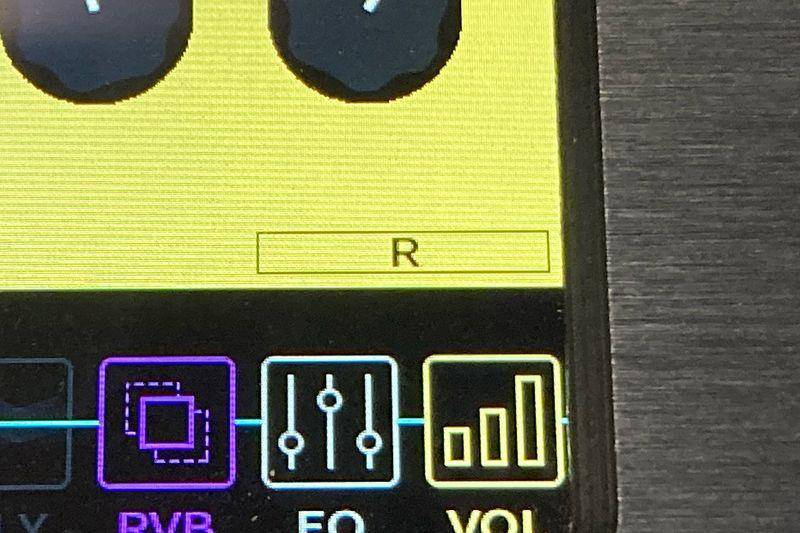
When you get lost in fiddling with the knobs too much, you can simply press this to return to the starting point without having to switch patches every time. I think this feature is especially useful for people who are new to sound creation.
■ Analog Knobs and Jog Dials
The master knob on the MG-30 is analog. It has the advantage of allowing more seamless fine-tuning than digital.
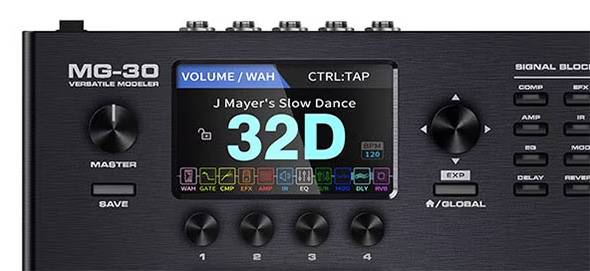
In the middle is the “jog dial.”
Turning this allows you to quickly change the effect type and item cursor! You can also change the effect type or item cursor quickly and easily.
This dial also functions as a “cross key” that moves up, down, left, and right, so you can perform various operations continuously without taking your hands off the dial. It’s so nice to not have to reach for buttons here and there.
■ Processing Power Beyond the Price
No matter how good the effects are or how many good functions are installed, if the operation is sluggish or the number of usable effects is limited, you will feel dissatisfied.
Despite the fact that the MG-30 is a multi-tool that costs about 25,000 yen (after subtracting the price of the included switches),
- Two DSPs (processors)
- Audio processing at 32-bit 48 kHz
- Supports IR data of 1024 samples (WAV)
The system is a monster. It shows us a crisp and stable operation.
■ Equipped with Acoustic IRs
The MG-30 is equipped with three types of acoustic guitar IRs as well as a cabinet IR.
While most acoustic guitar sims tweak the bandwidth to make the electric guitar sound like an acoustic guitar, the IRs reproduce the sound of an electric guitar as it comes out of an acoustic guitar, so there is a difference in their realism.
It is so good that if you combine reverb and EQ, you can even get it to a level where a blind test will determine that it is an acoustic guitar. This is a very nice IR for those who do not own an acoustic guitar.
■ Stereo minijack
The headphone out and AUX-in are mainly used for practicing at home. These two jacks are stereo mini (the others are standard phones).
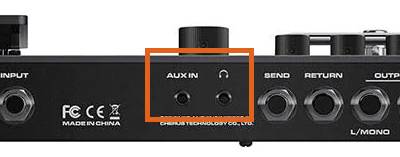
I think it was a good decision to make these jacks stereo mini, because it is not uncommon for light users to not have standard phone headphones or cables, even if they are already playing music.
■ Adoption of Type-C
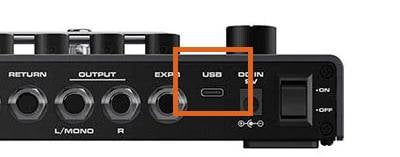
The USB jack on the MG-30 is Type-C. You may be thinking, “What the heck is that?” But there are many devices released after 2020 that use MicroUSB and I’m concerned about their durability. In that sense, I am glad to see this specification.
■ Maniacal Effects
Most multi-effects pedals are modeled after standard effects pedals, but the MG-30 is equipped with maniacal effects that will make guitar geeks swoon.
Some examples are...
- STEEL SINGER (modeling of the STEEL STRING model released by NUX)
- BOSS DM-3
- Ibanez modulation and pan delay
- DUOTIME (modeling of NUX Verde Hugo series duo time)
- ARION STEREO CHORUS (!!!)
and so on. It's nice to be able to try out multiple models that are subtly more expensive than the actual used ones.
■ Graphics with a lot of persistence
When you select an effect on the MG-30, a picture of the original is displayed, and its quality is extraordinary.
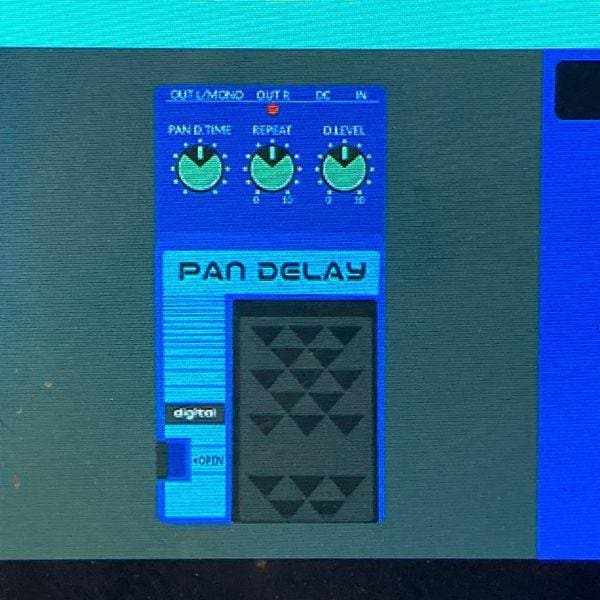
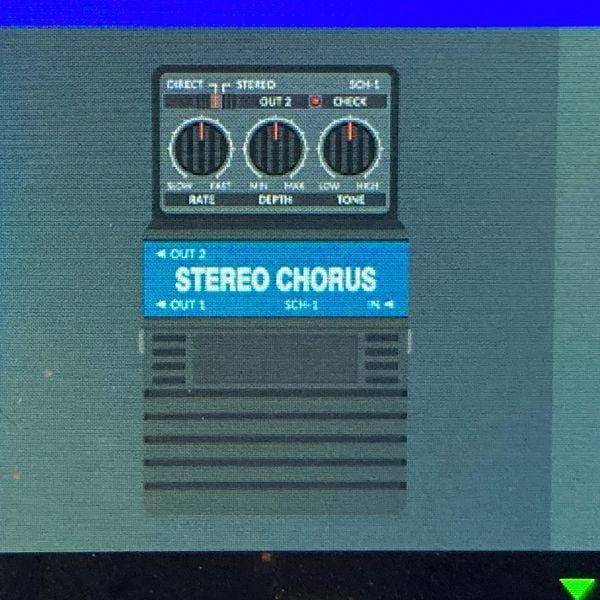
I never dreamed that I would see an Arion chorus drawn with dots in the Reiwa era. The selection of the effects on board shows the nerdy nature of the designers.
■ Reamp Function
With the spread of plug-in amplifiers, adding an amplifier to the dry signal has become a common technique. This is a very smart recording technique that allows for any amount of sound creation afterwards.
On the other hand, “reamping,” in which the same thing is done with actual amplifiers and outboards, is a much more difficult task. This is because it requires specialized equipment and prior knowledge of settings.
The MG-30 can easily realize such a reamplifier.
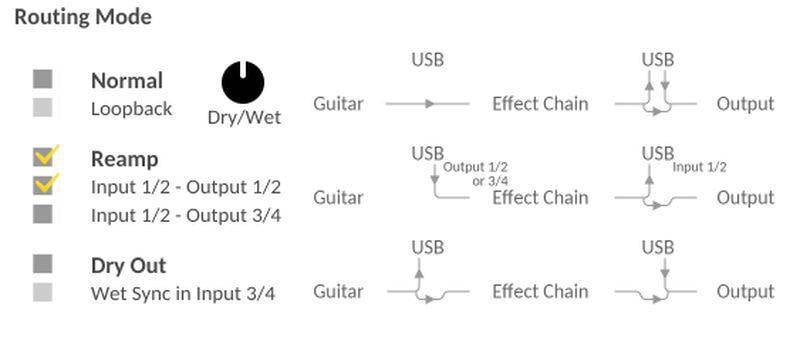
Connect the MG-30 to your DAW as an interface and select Reamp mode from the settings in the dedicated editor, and you will be able to record dry sounds while listening to wet sounds.
When you have recorded a take that’s to your satisfaction, set that track to solo mode and change the output to the MG-30.
If you record another track in that state in record mode… the dry sound recorded will be recorded with the MG-30 effect applied to it. This is really convenient.
The wet sound plays while you are playing, so it is easy to play, the load on the PC is light because no plug-ins are used, and the sound creation can be done with the knobs on the actual device. It is truly nice.
■ An honor student who can still fight
Have I conveyed the appeal of the MG-30? To put it bluntly, it has enough potential to be competitive in the future.
As of 2023, this model has not yet been discontinued, but be sure to purchase one as soon as possible!
The “sound & person” column is made up of contributions from you.
For details about contributing, click here.





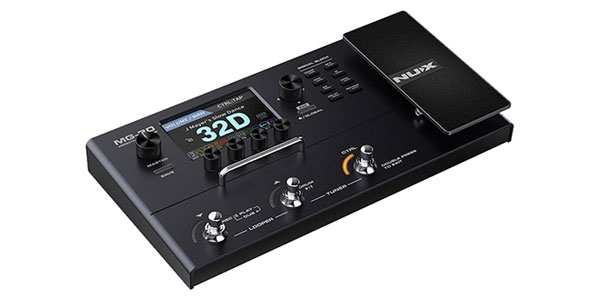

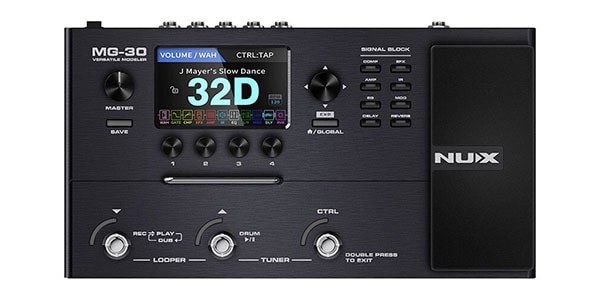
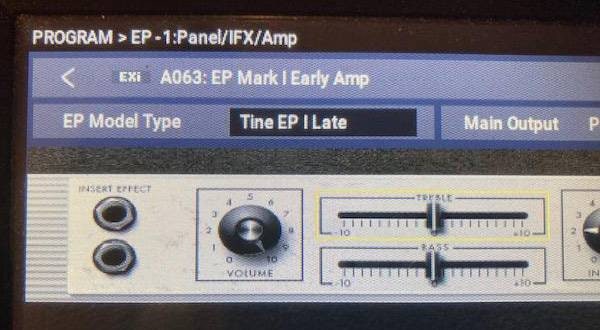




![[Latest for 2025] 5 Recommended Guitar Multi-Effects Pedals for Beginners](/contents/uploads/thumbs/2/2023/7/20230719_2_23355_1.jpg)
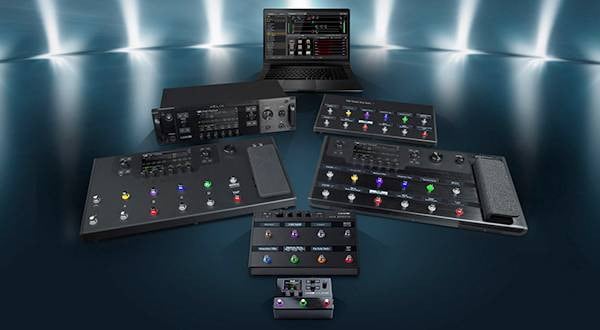
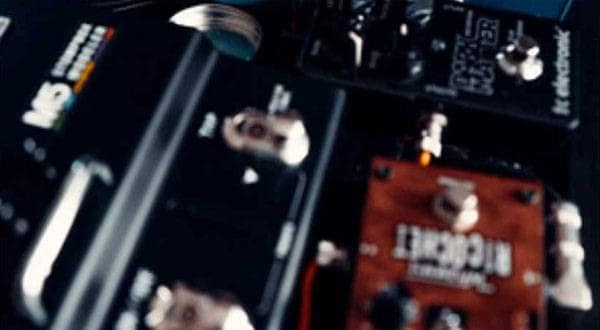
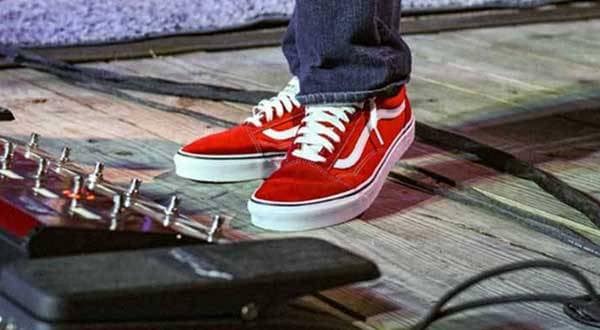

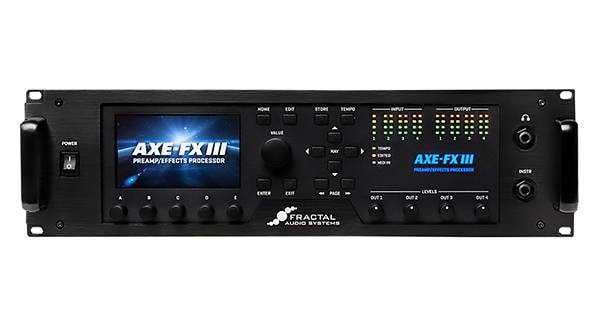
 【初心者向け】エフェクター講座
【初心者向け】エフェクター講座
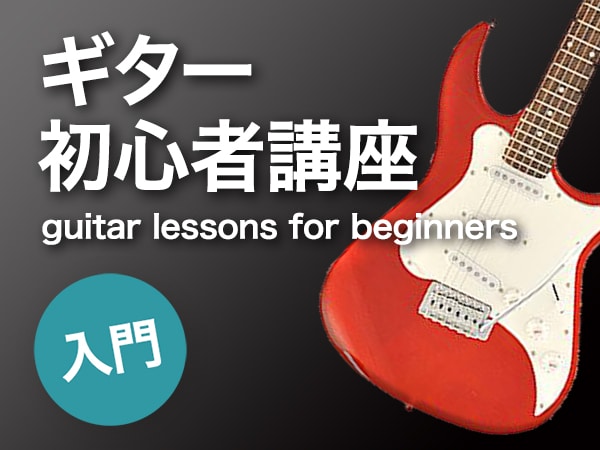 ギター 初心者講座
ギター 初心者講座
 あなたのエフェクターボード見せてください
あなたのエフェクターボード見せてください
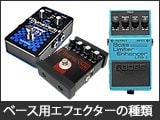 ベース用エフェクターの種類
ベース用エフェクターの種類
 エフェクターのつなぎ方
エフェクターのつなぎ方
 エフェクターの種類
エフェクターの種類
